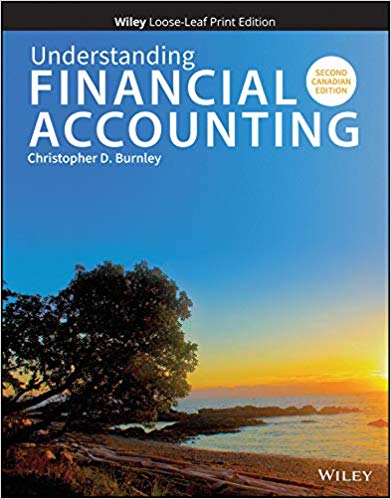Question
In July 1993, the Walt Disney Company issued $300,000,000 in senior debentures (bonds). The debentures had an interest rate of 7.55%, payable semi-annually, and were
In July 1993, the Walt Disney Company issued $300,000,000 in senior debentures (bonds). The debentures had an interest rate of 7.55%, payable semi-annually, and were priced “at par”. They were due to be repaid on July 15, 2093, a full hundred years from the date of issue. However, at the option of the company, the debentures may be redeemed (in whole or in part) at any time after July 15, 2023 or 30 years after the date of issuance.
Belle, the princess of fairy tales and the heroine of a popular Disney animated film, according to legend, slept enchanted in a magical castle for a hundred years. Disney's 100-year bonds were immediately dubbed the "sleeping beauties."
The issue sparked a lot of comments among portfolio manager traders.
“She's crazy,” said William Gross, chief investment officer of fixed income at Piper Capital Management Company. "Look at the path of Coney Island over the last fifty years and see what happens to the amusement parks."
Scott Jacobson, director of fixed income research at Piper Capital Management, called the bonds too risky for his clients, but "if corporate treasurers can get away with it, why not?"
Others interpreted the successful sales of the bonds as a vote of confidence in the economic policy of the Disney Company and the US "It shows that people believe that the Mouse will still be singing and dancing 100 years from now," said Tom Deegan, chief of Disney corporate communications). And Alan Greenspan, Chairman of the Federal Reserve Board of Governors, called bonds “one of the most important indicators that the long-term inflation expectations that have hit our economy and financial markets so hard seem to be receding… a very good sign.”
As long-term interest rates declined in 1992 and 1993, businesses and investors began to show renewed interest in very long maturities. The Tennessee Valley Authority (a government-owned hydroelectric power company) sold a 50-year bond in April 1992. Ford, Boeing, Texaco, and Conrail followed with their own 50-year issues (irreverently called “Methuselah” bonds). in 1993.
The Disney bonds were the first 100-year bonds issued since 1954, when Chicago & Eastern Railroad (a Union Pacific subsidiary) issued 5% bonds due 2054. The longest-lasting liability award, however, went to Canadian Pacific Corporation, which was paying 4% of a 1000-year bond, issued by the Toronto Gray and Bruce Railway in 1883, and due to be repaid in 2883.
The idea for the 100-year bond came from an institutional investor. As reported in the Wall Street Journal, an institution has approached Morgan Stanley with a request for 100-year corporate bonds to balance its short-term holdings and lengthen the duration of its portfolio. Thus, according to one reporter, the 100-year bonds "were conceived by quants hiding in cramped rooms filled with computer screens."
The issue price was set on July 20, 1993 to yield 0.95% (95 basis points) over the benchmark 30-year Treasury bond. Analysts estimated this was 15-20% more than Disney would have paid if it had issued 30-year bonds. And Disney had the right to redeem the bonds after 30 years for 103.02% of face value. Thus, thirty years later, the company had the best of both worlds. If prevailing interest rates were low, you could call the bonds and replace them with a cheaper issue. But if interest rates were high, the bonds could keep paying 7.55% for seventy more years!
Demand was so rapid that the company doubled the size of the issue from $150 million to $300 million. Merrill Lynch, co-manager of the Disney offering, saw a flood of interest from the very long-maturity bonds. According to Grant Kvalheim, managing director of Merrill Lynch & Co., "We went to Coca-Cola and showed them the [Disney] bonds." Three days later, Coca-Cola Co. went public with its own $150 million 100-year issue. Coca-Cola's 100-year bonds had a price yield of 7.455% or just 80 basis points over the benchmark Treasury, but unlike the Disney bonds, they were not callable.
The main buyers of the Disney and Coca-Cola bonds were large institutions, especially insurance companies and pension funds. There was also speculation that some Wall Street houses would split the bonds into their components and sell the pieces separately.
At the end of the week, professionals were still divided on whether the two 100-year bond issues were indicators of a trend and (as Greenspan put it) evidence of confidence in the economy, or just two novelty items that brightened up a dull week in July. , before everyone went on vacation!
Case Preparation Questions:
1. What are the cash payments associated with the Sleeping Beauties? Who gets how much, and when, for every $100 of bonds issued?
Step by Step Solution
3.55 Rating (159 Votes )
There are 3 Steps involved in it
Step: 1
Based on the information provided the cash payments associated with the Sleeping Beauties Disneys 10...
Get Instant Access to Expert-Tailored Solutions
See step-by-step solutions with expert insights and AI powered tools for academic success
Step: 2

Step: 3

Ace Your Homework with AI
Get the answers you need in no time with our AI-driven, step-by-step assistance
Get Started


